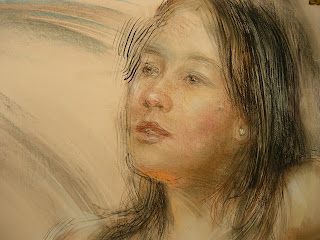Tracy White, Creating Keepsakes, Primedia, 2006

No, I didn’t purchase this book. I only borrowed it from friend and fellow scrapbooker, Nita. Not because I was too cheap (huh!) but because I seriously believed I didn’t need it. I have dabbled in photography since high school, and even took a photography course when I got my Nikon FM2, a fully-manual SLR. It’s safe to say I know about f-stops, apertures and ISOs. So no, I was not interested in another photography book.
Professional photographers will find the tips and techniques in the book common sense or purely intuitive. But for beginners, it is a good resource. It gives advice on taking every day pictures, portraits, places, nature and landscapes, holidays and special occasions and action. There is also a section of helpful hints for photographing babies, toddlers, children, teens and adults. I like how the book presents photos by different photographers and how it discusses their individual approaches. The approaches are practical and easy to follow. No f-stops and aperture settings to confuse you or make your eyes glaze over.
I am neither a professional nor a beginner but I still found some value in this book, particularly on lighting and composition. It guides you to take photos that tell all the details of the story. It’s not just taking photos, it’s taking photos that would look good in your layouts. In fact, just looking at the photographs inspires me to grab my camera and take photos. Something I have come to think of lately as a chore more than a fun activity.
These days, I use my point and shoot digital camera more often than my trusty FM2. It is easier to lug around and I love the convenience of being able to preview the shot immediately after it was taken. Not to mention, no film costs. I am frustrated, however, that my digital camera has no manual controls. The book reminds me to use the different scene modes in my camera. It tells me when to use these settings. So for now, I am quite happy with what I have (though I won’t stop wishing for a Nikon D80).
The best prcatical advise in this book? Read your camera manual. It is not as exciting to read (or look at) as this book but it tells you what your camera is capable of. Then practice, practice, and practice some more. Take more pictures than you will ever need. Then choose the best photos of the lot. And remember, you don’t have to scrap them all.





















.jpg)











































No comments:
Post a Comment